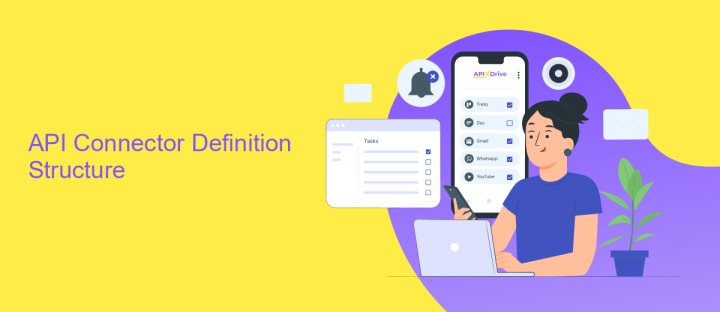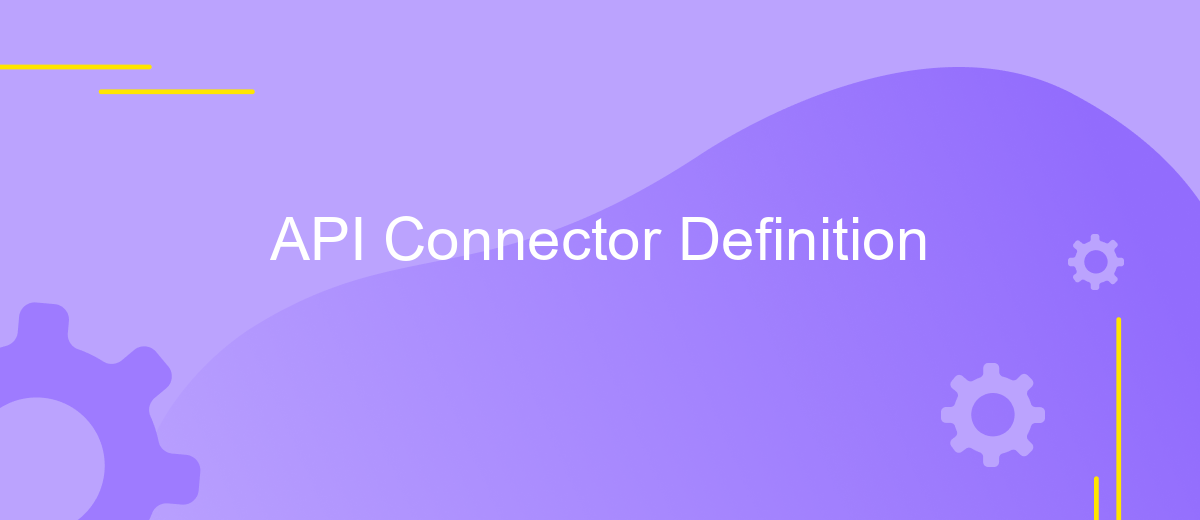API Connector Definition
An API Connector serves as a crucial bridge in modern software development, enabling seamless communication between disparate systems and applications. By facilitating the exchange of data and functionality, API Connectors empower developers to integrate various services efficiently. This article delves into the definition, functionality, and significance of API Connectors, exploring how they enhance interoperability and streamline processes in today's interconnected digital landscape.
Introduction
API Connector Definition is a crucial component in the integration of various software systems, enabling seamless communication and data exchange. It serves as a bridge that connects different applications, allowing them to interact and share information efficiently. With the increasing complexity of digital ecosystems, a well-defined API connector is essential for ensuring interoperability and enhancing the functionality of software applications.
- Facilitates seamless integration between disparate systems.
- Enables real-time data exchange and synchronization.
- Enhances the scalability and flexibility of software solutions.
- Reduces development time and costs by utilizing pre-built connectors.
- Improves security by managing authentication and authorization processes.
In today's rapidly evolving technological landscape, businesses need to leverage API connectors to remain competitive and agile. By implementing a robust API connector definition, organizations can streamline operations, improve customer experiences, and drive innovation. As the demand for interconnected systems continues to grow, the importance of API connectors in facilitating efficient data flow and integration cannot be overstated.
API Connector Definition Structure

The structure of an API Connector Definition is crucial for seamless integration between different software systems. It typically involves a set of parameters that define how data is exchanged, including endpoints, authentication methods, and supported data formats. A well-defined API Connector ensures that data flows smoothly and securely, reducing the risk of errors and enhancing system interoperability. This structure also includes error handling mechanisms and rate limiting configurations, which are essential for maintaining performance and reliability. By clearly outlining these components, developers can create connectors that are both efficient and easy to manage.
Using services like ApiX-Drive can simplify the process of setting up API connectors. ApiX-Drive offers a user-friendly interface that allows users to configure integrations without extensive coding knowledge. It provides pre-built templates and tools to customize API connections to fit specific business needs. By leveraging such platforms, organizations can save time and resources, allowing them to focus on their core operations. Moreover, ApiX-Drive's robust documentation and support further streamline the integration process, making it accessible even to those with limited technical expertise.
Connector Metadata

Connector metadata is crucial for understanding the capabilities and configurations of an API connector. It provides essential information that helps developers and users effectively integrate and utilize the connector within their systems. This metadata typically includes details about the connector's functionality, supported operations, and any specific requirements for successful implementation.
- Functionality: Describes the primary purpose and operations of the connector, such as data retrieval, submission, or processing.
- Authentication: Specifies the authentication methods supported, including OAuth, API keys, or other mechanisms.
- Endpoints: Lists the available API endpoints, including their URLs and necessary parameters for interaction.
- Data Formats: Details the supported data formats, such as JSON, XML, or CSV, for both incoming and outgoing data.
- Error Handling: Provides information on error codes and messages, helping users troubleshoot issues effectively.
Understanding connector metadata is vital for ensuring seamless integration and maximizing the benefits of an API connector. By providing a comprehensive overview of its features and requirements, metadata empowers developers to make informed decisions and tailor the connector to meet specific needs. This structured information ultimately enhances the efficiency and reliability of API interactions.
Connector Behavior Definition

Defining the behavior of an API connector is crucial for ensuring seamless integration and communication between different systems. A well-defined connector behavior outlines how the connector will interact with the API, handle data, and respond to various scenarios. This ensures that the connector operates efficiently and meets the intended objectives without causing disruptions.
To establish a robust connector behavior, it is important to consider several factors. These include the expected response times, error handling mechanisms, and data transformation processes. By addressing these aspects, developers can create connectors that are resilient, reliable, and capable of adapting to changes in the API or the systems it interacts with.
- Define response handling strategies for success and error scenarios.
- Establish data validation and transformation rules.
- Set up retry mechanisms for transient failures.
- Ensure compliance with security and authentication protocols.
By meticulously defining these behaviors, developers can ensure that the API connector not only functions correctly but also enhances the overall efficiency and reliability of the system it supports. This approach helps in minimizing potential disruptions and facilitates smooth, ongoing operations.


Connector Publishing Options
When publishing an API connector, it's essential to consider the available options to ensure seamless integration and functionality. One of the primary options is to define the visibility of your connector. You can choose to keep it private, allowing only specific users or teams access, or make it public, enabling broader usage across different platforms. This decision impacts who can utilize and benefit from the connector, so it's crucial to align it with your strategic goals.
Another significant aspect is the integration with third-party services like ApiX-Drive. This platform simplifies the process of connecting various applications and automating workflows. By leveraging such services, you can enhance the functionality of your API connector, offering users an easy way to integrate with numerous applications without extensive technical knowledge. Additionally, consider providing comprehensive documentation and support to assist users in effectively utilizing your connector, thereby enhancing user satisfaction and adoption rates.
FAQ
What is an API Connector?
How do I set up an API Connector?
What are the benefits of using an API Connector?
Can I use an API Connector without technical expertise?
What should I consider when choosing an API Connector?
Apix-Drive is a universal tool that will quickly streamline any workflow, freeing you from routine and possible financial losses. Try ApiX-Drive in action and see how useful it is for you personally. In the meantime, when you are setting up connections between systems, think about where you are investing your free time, because now you will have much more of it.

